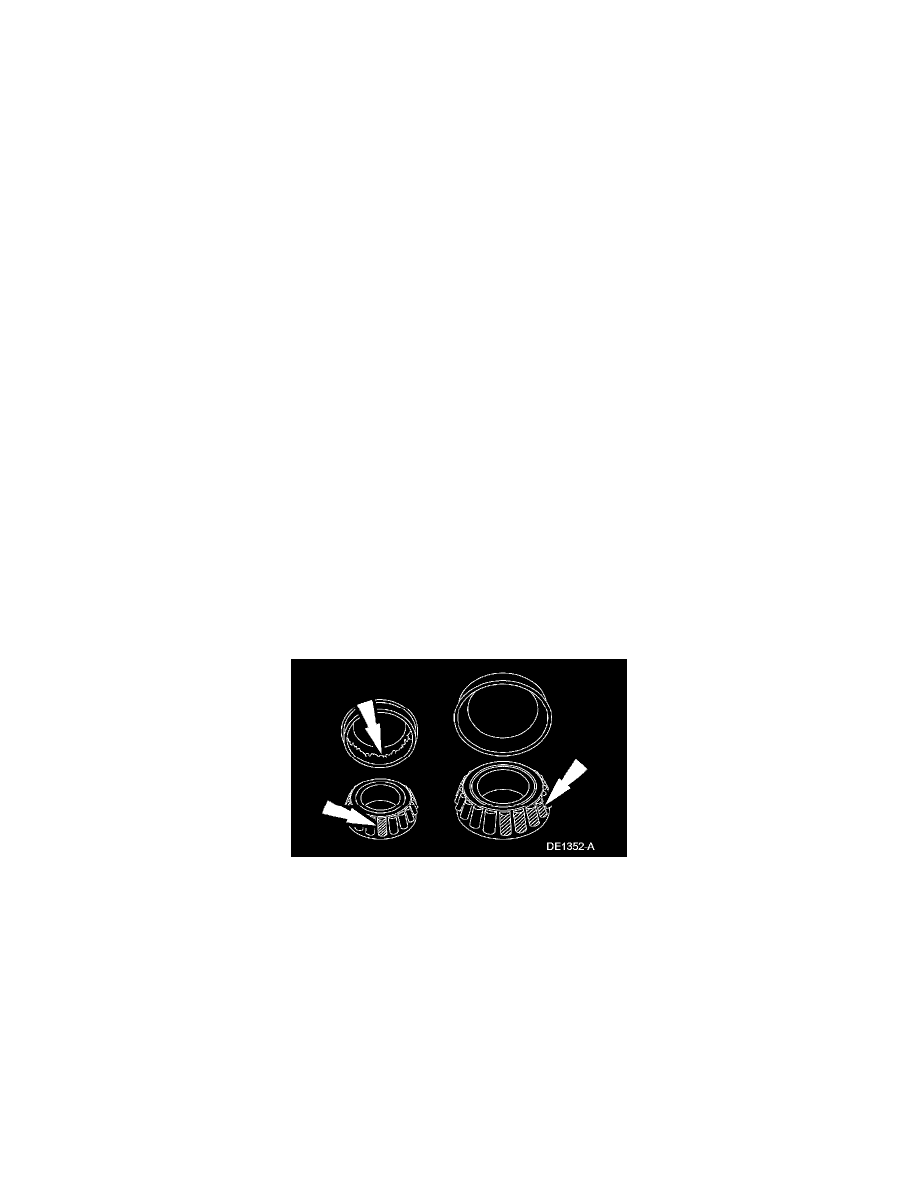Mountaineer 2WD V6-4.0L VIN K (2007)

One cause of excessive pinion flange runout is incorrect installation of the axle drive pinion seal. Check to determine if the spring on the seal lip has
been dislodged.
Halfshafts
NOTE: Constant velocity (CV) joints must not be installed unless disassembly and inspection reveals unusual wear.
NOTE: While inspecting the boots, watch for indentations ("dimples") in the boot convolutions. Indentations must be removed.
^
Inspect the boots for evidence of cracks, tears or splits.
^
Inspect the underbody for any indication of grease splatter near the boots outboard and inboard locations. This is an indication of boot/clamp
damage.
Axle Noise
NOTE: Before disassembling the axle to diagnose and correct gear noise, eliminate the tires, exhaust, trim items, roof racks and wheel bearings as
possible causes. Follow the diagnostic procedures in Vehicle/Testing and Inspection.
The noises described as follows usually have specific causes that can be diagnosed by observation as the unit is disassembled. The initial clues are the
type of noise heard during the road test.
Gear Howl and Whine
Howling or whining of the ring gear and pinion is due to an incorrect gear pattern, gear damage or incorrect bearing preload.
Bearing Whine
Bearing whine is a high-pitched sound similar to a whistle. It is usually caused by worn/damaged pinion bearings, which are operating at driveshaft
speed. Bearing noise occurs at all driving speeds. This distinguishes it from gear whine which usually comes and goes as speed changes.
As noted, pinion bearings make a high-pitched, whistling noise, usually at all speeds. If however there is only one pinion bearing that is
worn/damaged, the noise may vary in different driving phases. New pinion bearings must not be installed unless they are scored or damaged, or there
is a specific pinion bearing noise. A worn/damaged bearing will normally be obvious at disassembly. Examine the large end of the rollers for wear. If
the pinion bearings original blend radius has worn to a sharp edge, a new pinion bearing must be installed.
A wheel bearing noise can be mistaken for a pinion bearing noise. On rear wheel drive (RWD) vehicles, check the wheel bearing for a spalled cup and
spalled/damaged rollers. Install a new wheel bearing if any of these concerns are detected.
On four wheel drive (4WD) vehicles, check the wheel bearing for rotating smoothness and end play.
Chuckle
Chuckle that occurs on the coast driving phase is usually caused by excessive clearance between the differential gear hub and the differential case
bore.
Damage to a gear tooth on the coast side can cause a noise identical to a chuckle. A very small tooth nick or ridge on the edge of a tooth can cause the
noise.
Clean the gear tooth nick or ridge with a small grinding wheel. If the damaged area is larger than 3.2 mm (1/8 inch), install a new gearset.
To check the ring gear and pinion, remove as much lubricant as possible from the gears with clean solvent. Wipe the gears dry or blow them dry with
compressed air. Look for scored or damaged teeth. Also look for cracks or other damage.
If either gear is scored or damaged badly, a new ring gear and pinion must be installed.
